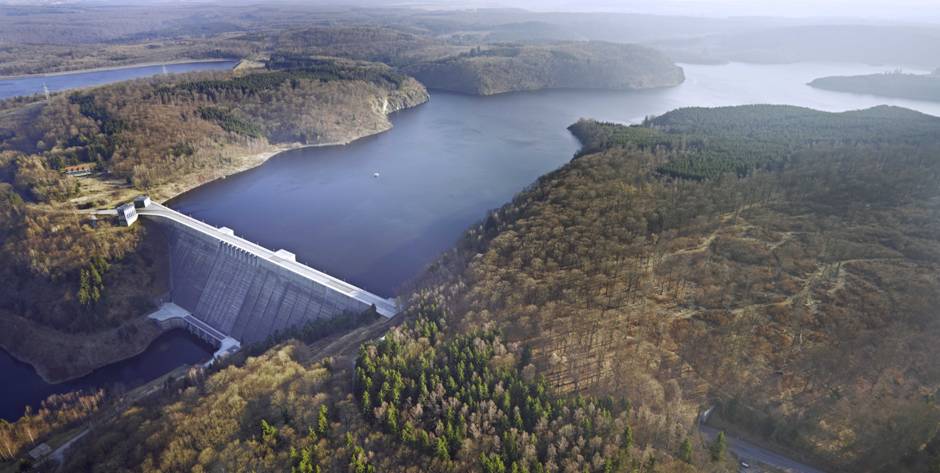TregaTa
Greenhouse Gas Emissions from Reservoirs: Mechanisms and Quantification
(Treibhausgasemissionen aus Talsperren: Mechanismen und Quantifizierung)
Duration: 12/2016-11/2019
 Rappbode-reservoir (Foto: Künzelmann, UFZ)
Rappbode-reservoir (Foto: Künzelmann, UFZ)
Background
The emissions of carbon dioxide (CO2) and methane (CH4) from inland waters are an important source in the global greenhouse gas (GHG) balance and reservoirs are particular hot spots of GHG emissions. The GHG emissions are temporally and spatially highly variable. Currently, not much is known about the actual flux rates from temperate reservoirs, and the processes involved are not completely understood. In this project, we would like to quantify the GHG emissions from two German reservoirs. The central topic is the understanding of the regulation of CO2 and CH4 emissions and, especially, to comprehend effects of altering water levels, trophic state and meteorological drivers. We would like to test three major hypotheses:
- Short term events contribute significantly to the overall balance.
- Temporal pattern of CO2 and CH4 emission depend on the trophic state of the reservoir and are complexly overlaid by atmospheric effects.
- The spatial distribution of the flux rate of the two gasses CO2 and CH4 depends differently on internal (e.g., hydro-chemical parameters and water depth) and external interacting factors (e.g., wind, air pressure, radiation and energy balance)
Methods
The TregaTa project is placed in the nexus between limnology, hydrology and boundary layer meteorology. We will investigate two different reservoirs, the oligotrophic Rappbode reservoir located in the Harz Mountains and the eutrophic reservoir Bautzen in Lusatia. Temporal patterns of CO2 and CH4 emissions will be quantified by a combination of micrometeorological and water side measurements. Central to the project will be a floating Eddy Covariance (EC) measurement system. The conflation of EC flux measurements, concentration measurements in the water body, and meteorological basic data allows the determination of the physical gas transfer coefficient. The spatial variability of GHG emissions will be analysed by floating chamber measurements and ebullition funnels. The measurements of emission rates are accompanied by the analysis of the sediment and hydro-chemical parameters, e.g., pH and concentrations of O2, CO2 and CH4 as well as by continuous measurements of energy balance, radiation budget and classical meteorological variables. Proper modelling approaches will be used for generalisation and regionalisation of the measurements and project results.
Partner
Helmholtz Centre for Environmental Research GmbH - UFZ
Dept. Lake Research SEEFO (Dr. Matthias Koschorreck, M.Sc. Philipp Keller)
TU Dresden
Institute of Hydrology and Meteorology (Dr. Uwe Spank)
Funded by:

